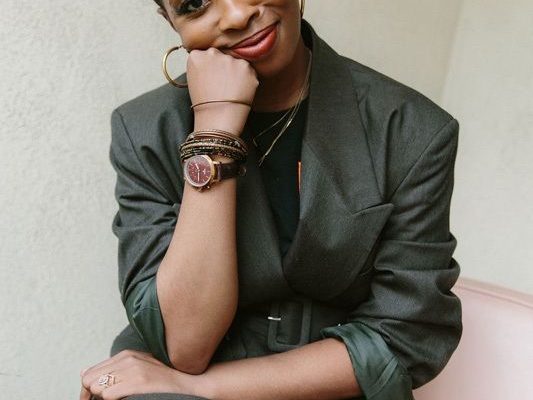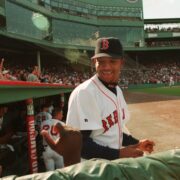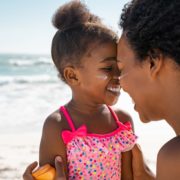The glitz and glamour of entertainment is nothing without the people who dress today’s biggest stars. For “Who’s Behind the Clothes,” HuffPost spotlights stylists and costume designers who have delivered some of our favorite celebrities’ or characters’ most memorable looks. Read my interview with Quinta Brunson’s stylist Bryon Javar.
Few people can boast that the first studio project they costume-designed for was a groundbreaking HBO series. Ayanna James Kimani, a stylist turned costume designer, knew the heights that “Insecure” would reach long before mainstream America caught on.
With over a decade in the game, she had been working with Issa Rae on her YouTube series “Awkward Black Girl” for years prior to “Insecure’s” big-screen debut.
“I’d already had a relationship with her,” Kimani recalled. “And when ‘Insecure’ came along and got the pilot order, she was like, ‘Do you want to do it?’ I was like, of course.”
Since then, Kimani has designed for the MTV Movie & TV Awards, “All American: Homecoming,” and Ava Duvernay’s “Queen Sugar.”
But before that, she was a kid with a penchant for clothes and a love for the film “Malcolm X,” designed by “Black Panther” costume legend Ruth E. Carter.
Born in Spanish Town, Jamaica, and raised all over the East Coast, Kimani is a self-taught stylist turned costume designer. She attended Florida A&M University in 2003, pursuing a biochemistry degree — and quickly realized she “wasn’t great at it.” But her passion shone through her extracurricular activities on campus, notably a modeling troupe called FACES.
“That was a very impactful time. We were cutting up T-shirts, stitching, making hoodies and dresses together,” she said. “It was very chop shop, but it gave me an opportunity to have fun, to do something that I enjoyed, to find out years later that that is actually something that I can have a career at.”
When her parents moved to LA, Kimani followed suit, using the opportunity as a launchpad for her creative journey. After landing her first gig from Twitter, the rest is history.
For “Who’s Behind the Clothes,” Kimani talked to HuffPost about what designing for contemporary Black sitcoms entails, the importance of amplifying Black designers in her work and more.
Nicki Sebastian Photography.
“Insecure” has solidified itself in the legacy of Black sitcom fashion, thanks to you and [costume designer] Shiona Turini. What does it mean to be in this canon of Black costume designers such as Yolanda Braddy, behind “Moesha,” or the legend, Ceci, who worked on “A Different World” and “Living Single?”
It means that we have more control over the stories that we’re telling and that there are more of us getting the opportunity to tell our stories on various mainstream platforms. From a macro perspective, seeing this means that we’re here, right here in numbers. There are Black costume designers out there, there are Black brands and businesses, both high and low. We just need to look for it, or we just need to make an effort to find it. My default is Blackness.
I grew up in a Caribbean home and I’m Jamaican, but I’ve been traveling back and forth to Africa since I was 10. I went to a historically Black university, and I feel like I’ve been able to see the different facets and the multifacetedness of Black people. With everything that I do, particularly when it comes to Black design, I try to go to Black designers or figure out a way to convey a message about Black culture.
From costume designing on series such as “Queen Sugar” and “Insecure” and curating images that are monumental to the culture, what does that impact mean to you?
I think I don’t even really take time to think about what it means. I just do the work, and I do it from the heart. Any project that I’ve done, whether it be a Black-centered project or something a little bit more diverse, I’ve always worked hard at telling the story and portraying the characters authentically.
I would say “Insecure” is definitely a groundbreaking show. In addition to it being a good show, watching Issa come up from YouTube, really cement her place in Hollywood as a creative, and in the way that she did it and continues to do it, I think for me it’s more of the impact that I watched someone and had the opportunity to be alongside someone who created something groundbreaking.
My goal then, as it has always been, was to tell a story authentically. Having known who some of these characters were based off of or seeing the similarities between “Insecure” and the nods to “Awkward Black Girl,” I just wanted to make sure that I was doing my part in showcasing the characters authentically and using local designers, working with Black designers, and working with designers in the diaspora. That was always my intention because those were the characters that I was dressing.
In terms of impact, I don’t know when I’ll know, but I am more grateful for having had this experience to create something with someone I believed in before it became popular. To see that it took off is kind of the reward for me.
In Seasons 1 and 2 of “Insecure,” we see that Issa was often wearing graphic T-shirts with pro-Black messaging or color-blocking reminiscent of Black ’90s culture. Why was it important to you to platform Black designers and small indie labels throughout the series?
It’s authentic to use Black designers and work with Black creatives because it’s validating our own work. It’s presenting our culture, our flavor and what has impacted and influenced us as a generation of creatives. It was saying thank you to those who came before us and also giving a highlight of those that are coming up. For me, it’s always important because it validates ourselves.
One thing that I will share a lot of times is that I remember working with a specific designer on Season 2, and we used his sweatshirt. After the episode aired, I remember seeing on his Instagram story that he had stacks and stacks and stacks of boxes ready to go out. Because of “Insecure,” he pretty much sold out all of his inventory. To see that we had that type of beat on the culture and that type of influence validates what we do. It’s not just the sweatshirt that the homie made. It’s something that speaks to the culture, to the time, and that people identify with. If anything else, it shows that we were here. It shows that we did something.
By Season 3, there is a noticeable glow-up with each character’s style. Was that supposed to be consistent with Issa, Lawrence and Molly becoming more mature? How did the costumes advance that narrative?
In Season 1, when we meet Lawrence, we made his clothes oversized because actually, Jay is super ripped. We tried to make him look as dowdy and broke as possible. In Season 1, you see him in a lot of grays and blacks, depressed, and his sweaters are two sizes too big and whatnot. When he goes to the job interview and he sees Tasha at the bank, that suit is not fitted. It’s a little oversized, almost like something that he probably bought when he was younger. As we get to the finale of Season 1 with Lawrence, in the episode, he’s actually in a nice gray, Vivienne Westwood suit, tailored beautifully. When they break up that night, it really does feel like Issa lost out.
I took the same approach to everybody’s character. Issa is still goofy; she’s not the cool one of the group of friends. She’s the one that always gets clowned. As we’re growing and everyone’s wardrobe is improving because 1) we got a little bit more money but 2) l had more I wanted to say with the clothes. Season 2 had a lot of T-shirts and I put them in moments that can correlate to what’s happening. In the scene where Issa’s trying to masturbate and get the batteries out of the remote, the T-shirt she’s actually wearing is like a Humpty Dump shirt. To me, in that moment, it was just the irony and humor in that she’s sexually frustrated.
With Molly, we kept her as fly as we could, given her pending job change. As we’re going through Season 2, we’re trying to show everybody that she’s worth it. She knows she wants to get the raise. We just wanted to show what it was like when she had just a little bit of money. We introduced Black luxury designers with her. With Molly, I did a lot of Carly Cushnie at the time, Issa had some Brother Vellies. Issa wore a lot of designs that were more Afro-inspired or textured, whereas Molly has a more western or Eurocentric aesthetic, and that just shows the different environments they have to navigate.
Were there any shows that inspired you and you wanted to emulate or infuse into the costume design on “Insecure?”
I definitely went back and watched the first season of “A Different World.” Seeing Lisa Bonet’s character go to school and be awkward, but be beautiful and be the lead, that was really inspiring to me — and just all the textures, the colors and the vibrancy of watching that show. Then, when you go back and watch it, it’s still funny as hell! It’s still relevant. With “Insecure,” and having been fortunate to watch Issa’s ride, I knew that’s what was coming. I knew that this show was going to take the industry by storm. I had seen what she did with “Awkward Black Girl.” For me, it was like making sure that I was 150% in and that I was going all in for her project because this is something I truly believed in. It’s a beautiful thing to look up and see her get her flowers because she’s worked so hard for it and she definitely deserves it.
Apart from “Insecure,” you also styled the pilot for “All American: Homecoming,” and I distinctly remember the Telfar bag in it. What did the research process entail for a contemporary series geared toward younger, Gen Z viewers?
Having gone to an HBCU, I was already familiar with HBCU culture, particularly now in 2022 where we’ve had the Black Lives Matter movement and Black designers have been at the forefront. Having conversations with Nkechi [Okoro Carroll] the showrunner, we really wanted to take that authentic HBCU experience that I remember and reflect today’s projection of it. So, I followed a bunch of HBCU Instagram pages and I started thinking about … how it pertains to the characters and which styles would be appropriate for them. We had Geffri Maya as Simone; in the first season, they talked about how she’s really trying to find herself and find her style. A lot of her clothing felt very LA, a hodge-podge of what she’s had in the past. She doesn’t really have a lot of money moving forward, so trying to create a wardrobe that reflected someone who is in transition — because that was her.
We had another character, Netta Walker, who plays Keisha, and in the pilot, they describe her as the “It Girl” and “the mayor of the school.” I wanted her to give “It Girl” vibes; she wears a lot of stuff, and I really color-blocked a lot of her wardrobe. That was a big contrast, working on a character who was a lot more confident in themselves when it came to how they showed up in class and in school versus Geffri’s character, Simone, who was a little less confident, trying to figure it out as a teen mom and trying to make the tennis team.
For the guys, it was a lot of fun because I really love dressing men in streetwear, so Peyton and Sylvester, [I was] really kind of giving them their own unique, individual style but something that reflected the authenticity of the time. Peyton’s character Damon is from Chicago, so we put him in a lot of bubble jackets; we had him in really cool shoes. He was starting to get endorsement deals and get money, so his clothing was a little bit more expensive than some of his teammates. But then with JR, we put him in some really cool sweaters and gave him this very sort of mature sophomore vibe that I felt was really reflective of how I’ve seen men in Atlanta dress. It’s just really taking the layers from the story and the characters, and allowing yourself to piece together a wardrobe.
Tell me about your journey into costume design and styling.
Truthfully, I just fell into costume design and styling. I think I always had a creative eye and a sense of style. Growing up, I was always doing something related to fashion. My family relocated to Los Angeles, so I did as well. After deciding that I no longer wanted to pursue biochemistry, I landed myself an assistant stylist gig from Twitter. From that, I started styling my own clients. Then, I was kind of pulled into film and TV as an assistant. I was a wardrobe PA for a friend of mine, and once I did that, I really liked it. I began to do it myself on a smaller scale for anybody who needed wardrobe or costumes for something. I was always willing to give it a try. I crossed paths with Issa while working with her stylist on her smaller YouTube projects.
I came in at the tail end of “Awkward Black Girl.” She had done the first few seasons and was doing other projects on her YouTube. She was working with other writers and up-and-coming directors on a series of three pilot projects from different writers that we shot. I worked with her, [writer] Syreeta Singleton and [producer] Deniese Davis. We worked together for a few years, then “Insecure” came along, and she offered me the job. That started my official costume design career.
When you look back, can you recall a moment, a certain TV show or a certain film that was the impetus for this journey? Like, “Wow, that was really formative for me!”
There’s one that I will talk about often, and it’s “Malcolm X.” That’s one of my top five films. When I got into costume design, one of the first things that I did was research who are the Black costume designers — and Ruth E. Carter’s name popped up. When I saw that she designed “Malcolm X,” I was really inspired because I love that movie so much. There are very specific moments in that movie that were very impactful. What Spike Lee did in the ’90s — because I was probably between seven and 10 when that came out — I remember going to the movies and I was emotionally moved after watching it. To know that Ruth E. Carter, who was a Black woman like me, was behind the costumes, that was a moment where it really clicked. It was like, “Oh wow, this is a career. This is more than a one-shot thing,” which is again why I really do like costume design. We are the ones behind the scenes working together with a whole army, a whole fleet of creatives, to tell a story.
When you told your parents you wanted to leave biochemistry and start styling, what was their response?
More than anything, they definitely didn’t understand it. My father is in IT, so he thought I was going to go the science and engineering route. He didn’t get it, but I think he saw the amount of time and dedication that I put towards styling or just even learning about fashion. I am self-taught, so I didn’t even really assist that much, I could say. A lot of what I’ve learned is figuring it out as I go along. My father saw that from very early and because of that, he was very supportive of it. I never got a lot of pushback. As a matter of fact, there’d be some times where I needed to borrow money to do a job. I had to buy clothing for clients, and I didn’t have any money, so he would loan me some and I’d have to pay him back once I got paid. I would say at the end of the day, my father is moreso an advocate for whatever you’re passionate about, going all out, giving it your best efforts, and ultimately becoming a master of it. I’ve just taken that and have used that mantra in moving forward.
How is your personal style influenced by growing up in a Jamaican household and attending an HBCU? How would you characterize it?
I would say at least 50% of my clothing that I wear on a daily basis is from Black designers. I would also say 100% of my wardrobe really is like the Jamaican color palette. I wear a lot of black, green and gold. I wear a lot of T-shirts with African artwork on it, Caribbean photos on it. One of my favorite T-shirts is the Sintra Bronte T-shirt from Sammy B designs. I had it on Molly in Season 2 of “Insecure,” like that shirt is so ratty and torn up right now, but I wear it all the time. All of that, having a real Black, Black, Black, Black, Black experience — being Caribbean, raised in the South, lived out West for a little bit, lived up North, I’ve traveled to Africa — having that be my backdrop, you will always see that reflected in my wardrobe. There’ll be a Bob Marley T-shirt with some cowrie shell earrings from Senegal. It’s just a mishmash of Blackness.
What are you currently working on? Where would you like your career to go next?
Well, I just finished a series that unfortunately got canceled on CW called “Tom Swift.” It was a really good show. It’s an unfortunate innocent bystander of a corporate merger. It was ordered for two seasons but unfortunately, it got canceled after the first season, which then opened me up to do this feature for Disney. Right now, I’m working on a Disney movie named the “Slumber Party,” which will come out sometime next year. So, I’m in Atlanta.
I came into “Insecure” with contemporary wear. Every project that I choose now, I want it to push the dial a little bit on my knowledge. I want to continue to open and expand my learning and my understanding of the design process. Ideally, I love storytelling. I like discovering characters on a page and bringing them to life. I would love to be a part of more Caribbean and African-centered stories. I think that’s going to start coming down the pipeline a lot more. I want to do period pieces. I want to design the Jamaican Olympic uniforms. I want to design Carnival uniforms. I’ve become a true creative at heart, so wherever the opportunity to create presents itself, I’m going to jump at it. The sky’s the limit for me.











Comments